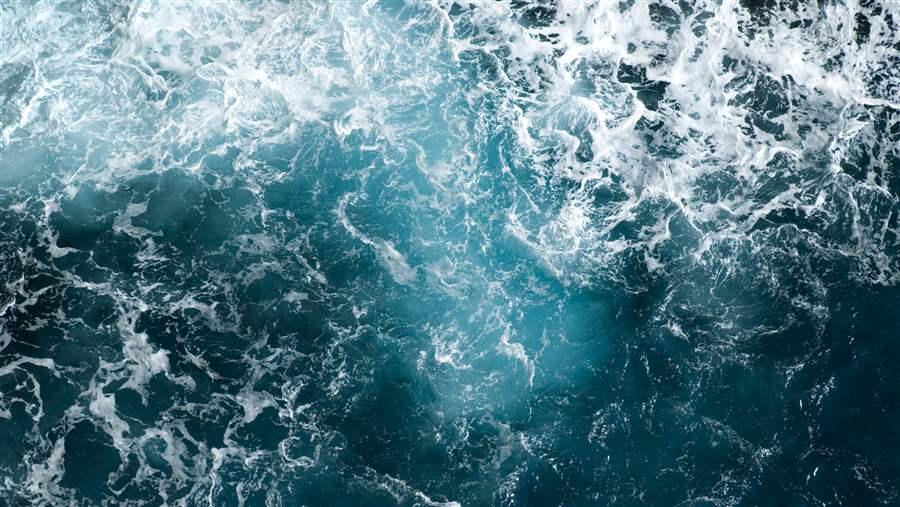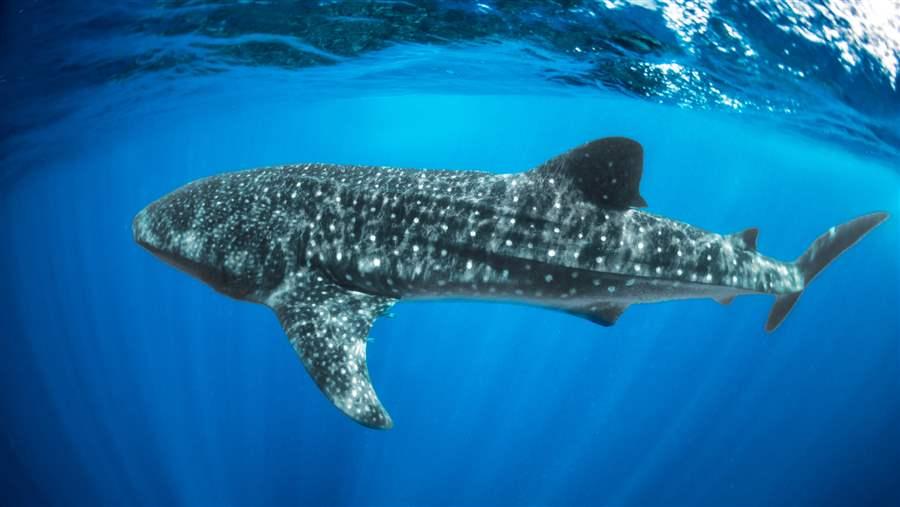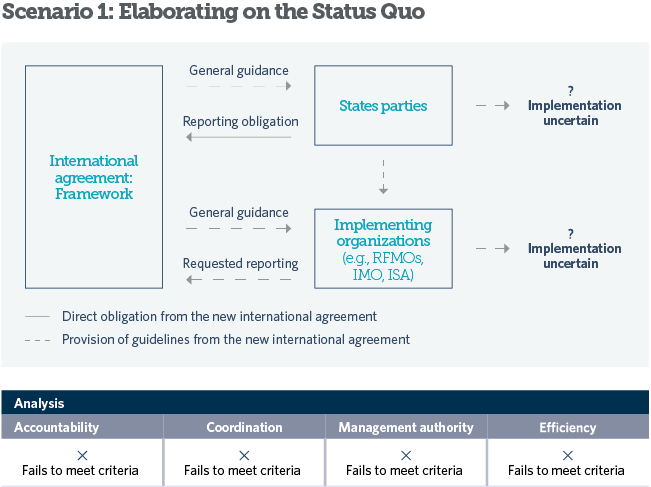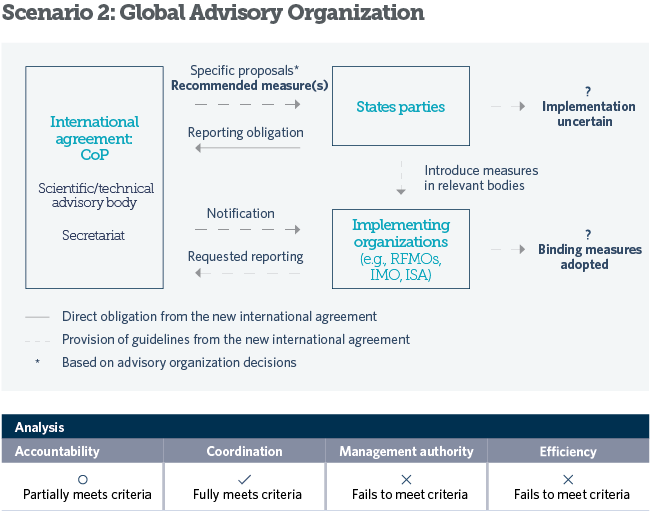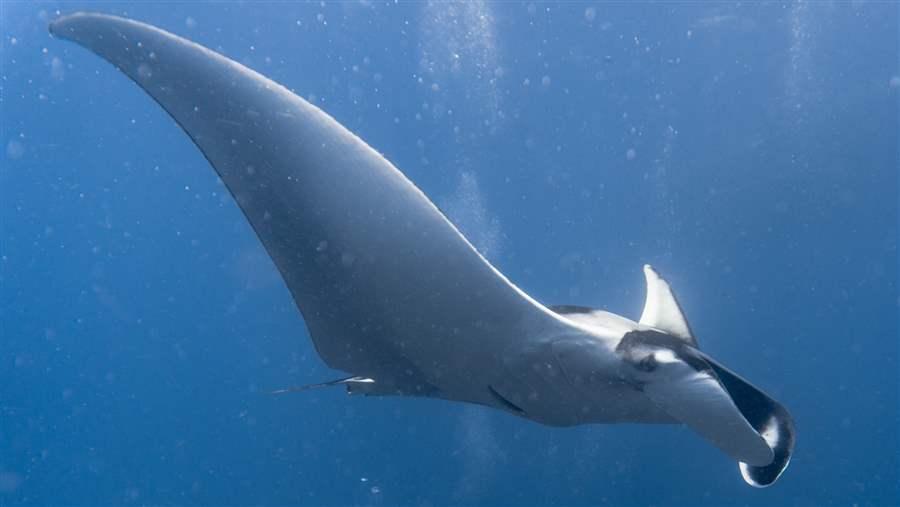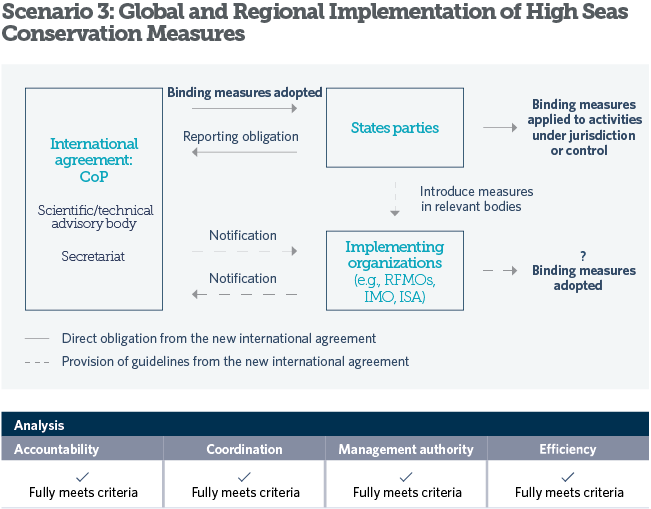Towards a Global Solution for High Seas Conservation
Protecting marine biodiversity beyond national jurisdiction
Overview
In June 2015, world leaders made the extraordinary decision to develop an international agreement on the conservation and sustainable use of marine biodiversity of areas beyond national jurisdiction, including the high seas. These areas make up two-thirds of the world’s ocean but are managed by a patchwork of bodies that regulate fishing, mining, shipping, and other activities for specific areas of the ocean. These bodies lack the legal mandate to establish comprehensive marine protected areas and marine reserves, or other conservation policies to protect biodiversity throughout an ecosystem.
The new treaty could help to close these gaps in global ocean governance and deliver much-needed protection to the world’s ocean. However, the success of the agreement will be determined by negotiations continuing through 2017 at the United Nations Preparatory Committee (PrepCom) meetings, which will set the stage for a formal treaty.
One key issue is how to deliver on the conservation and sustainable use objectives of a new international agreement without undermining the existing organizations currently governing human activity and resource use in the high seas.
Here we analyze three scenarios reflecting ideas put forward by States to determine which type of institutional arrangement could be best suited to deliver marine conservation benefits. The scenarios were evaluated on the following criteria:
- Accountability: the ability to hold States and existing organizations accountable for meeting their international commitments and mandates through measures that are both specific and binding.
- Coordination: the ability and capacity to coordinate the activities of States and various existing regional and sectoral bodies.
- Management authority: the ability to fill gaps in governance or implementation (e.g., due to the absence of a competent organization in a specific geographic area) through binding measures.
- Efficiency: cost efficiency as measured by the number of new organizations that would potentially need to be funded to fulfill the agreement’s objectives to comprehensively conserve and sustainably use marine biodiversity beyond national jurisdiction.
In this scenario, decision makers would adopt an agreement which provides general guidance to States that become a party (States parties) in lieu of establishing a new decision-making body. This agreement would elaborate and clarify some obligations and principles under international law, but implementation would otherwise be left to the discretion of States parties. Existing regional and sectoral organizations—such as regional fisheries management organizations (RFMOs), the International Maritime Organization (IMO), the International Seabed Authority (ISA), and others—would be involved only at the discretion of States that are party to both the new agreement and these organizations.
The new agreement could further request or require States parties to regularly report on their progress towards carrying out conservation activities on the high seas. In contrast, relevant existing organizations could only be requested to report, but this would not be a binding obligation. However, under this regime, the agreement would not be able to fill any governance gaps in instances where no competent body exists, or implementation gaps where a competent body fails to fulfill its mandate. Although a regular reporting process could provide for coordination among States parties, without a secretariat, decision-making body, or scientific bodies, there would be no institutional mechanism to develop a common information base, adopt or execute cross-sectoral management plans, or enhance coordination of existing organizations. This lack of authority could undermine the proposed objectives of the new agreement.
Although the initial cost of this scenario appears low, this arrangement is likely to require additional funding to increase the capacity and capability of existing organizations or necessitate the establishment of new organizations or regional coordination bodies which could successfully undertake new conservation measures, such as marine protected areas and reserves. Such an arrangement would still not ensure the strengthening or updating of such organizations, leaving the effective implementation of the proposed conservation objectives in doubt.
This scenario envisions a new global advisory organization with a Conference of the Parties (CoP), supported by a secretariat and a scientific and/or technical advisory body or bodies. This advisory organization would have the authority to make non-binding recommendations for specific conservation and sustainable use measures with input from the appropriate scientific and/or technical advisory body, as well as existing organizations, civil society, and other relevant stakeholders. States parties, individually and through regional and sectoral organizations to which they belong, would be encouraged to pursue activities towards the implementation of these measures.
The CoP could also notify existing regional and sectoral organizations of these specific measures, though these would be in the form of recommendations. However, as these bodies would not themselves be parties to the agreement and, more importantly, because the CoP’s recommendations would be non-binding, the bodies would have no direct obligation to carry out the CoP’s requests. The parties to the agreement, meanwhile, would be legally bound to take protective measures only if the existing organizations (of which they are also a member) adopted relevant measures. States parties could at most be required to regularly report on their national progress towards carrying out the measures, and reporting could be requested from relevant organizations asked to carry out these measures.
With a CoP, secretariat, and scientific advisory body, the agreement would be better-equipped to inform, assist, and coordinate the activities of implementing organizations, and the scientific advisory body would enable the CoP to recommend specific conservation measures. However, due to the non-binding nature of this regime, the CoP would have little to no authority to hold member States or implementing organizations accountable. Likewise, any gaps in governance or implementation due to lack of a competent organization, lack of political willingness from a minority of members, or coordination challenges amongst existing regional or sectoral bodies would not be explicitly addressed by this agreement.
The direct costs associated with this new global advisory organization would be to establish a secretariat and scientific body. Additional costs would be anticipated as support would be needed to strengthen existing and create new regional organizations to fill the governance gaps. As with Scenario 1, this arrangement would nevertheless fail to ensure the strengthening or updating of such organizations, leaving effective implementation of the proposed conservation objectives in doubt.
The final scenario shows an arrangement in which a global decision-making body (e.g., CoP) could adopt specific measures, with input from the appropriate scientific and/or technical advisory body, that are binding on its parties. As in Scenario 2, the CoP would also consider input from civil society, existing organizations, and other stakeholders, as appropriate. States parties would be obliged to pursue these measures individually with respect to activities under their jurisdiction or control (e.g., as a flag State, port State, etc.) and also through regional and sectoral implementing organizations to which they belong.
This model is consistent with the current powers of States to adopt higher standards for their own nationals and vessels. It does not, however, assume that all measures adopted under this scenario would immediately be binding or applicable to other States. For example, measures adopted that might constrain the freedom of navigation, which is under the exclusive authority of the IMO, would need to be pursued by States through the IMO. As with Scenario 2, while the CoP could provide notification of decisions to the existing regional and sectoral organizations with overlapping jurisdiction, these bodies would still have no direct obligation to carry them out. This scenario would enable its parties to adopt coordinated protective measures binding amongst themselves, allow the CoP itself to fill in any gaps where no organization exists to address the geography or activity at issue, and more actively coordinate the activities of implementing organizations.
The agreement would require Member States to regularly report on their progress towards implementation and would request reporting from existing organizations. Binding measures under this scenario would ensure greater accountability by States parties towards the goal of achieving real conservation benefits on the high seas. As with Scenario 2, the CoP, secretariat, and scientific/technical advisory body would all require funding. However, in this scenario, the CoP would be able to fill more of the governance and implementation gaps, so creating and financing new organizations might not be required, though financial assistance to existing organizations may still be beneficial.
Conclusion
To meet the objectives set forward by the United Nations General Assembly to effectively conserve and sustainably use marine biological diversity in areas beyond national jurisdiction (ABNJ), negotiators at the PrepCom meetings and subsequent intergovernmental conference should endeavour to negotiate an agreement that would ensure that the ecosystems, and the biodiversity therein, would be sufficiently considered and comprehensively protected, even without an existing regional or sectoral organization.
Protection of biodiversity will necessitate an institutional arrangement that holds States and existing organizations accountable for meeting their international commitments and mandates, provides for the coordination of the activities of various existing bodies, fills gaps in implementation (e.g., due to the absence of a competent organization in a specific geographic area), and does not present an overly burdensome financial cost. This analysis did not seek to evaluate every institutional arrangement proposed, but rather to depict representative models reflecting the ideas put forward by States.
The first and second scenarios would require the creation of additional organizations to fill geographic gaps where no competent organizations exist to implement measures to support the objectives of the agreement. Scenario 3 is the only regime in which a central decision-making body could identify specific measures that, if certain conditions were met, would be binding on Member States.
Although this scenario would require more fiscal and human resources than the status quo in order to support a secretariat, CoP, and advisory scientific/technical bodies, it would provide sufficient infrastructure and accountability to enable effective coordination amongst existing regional and sectoral organizations and not require a host of additional intermediaries. States should endeavour to negotiate an agreement that encompasses the basic elements outlined in the third scenario.
